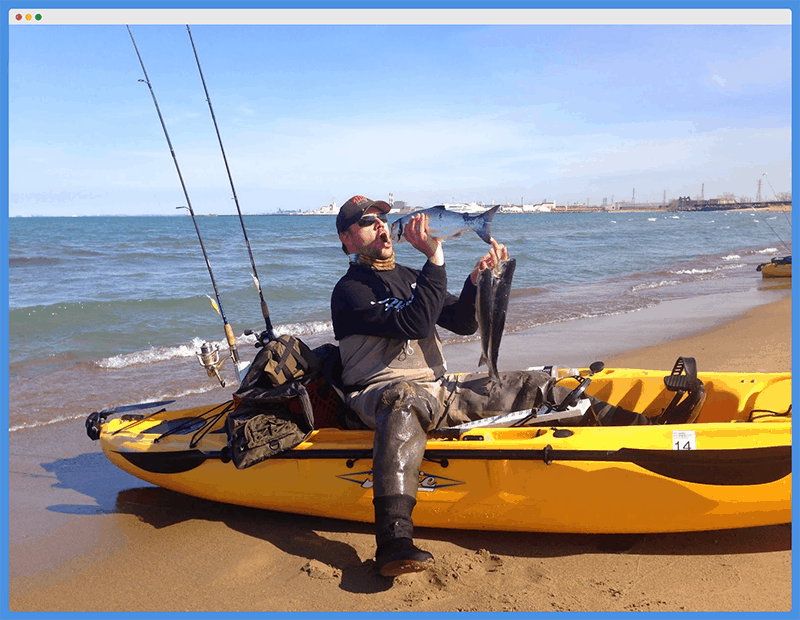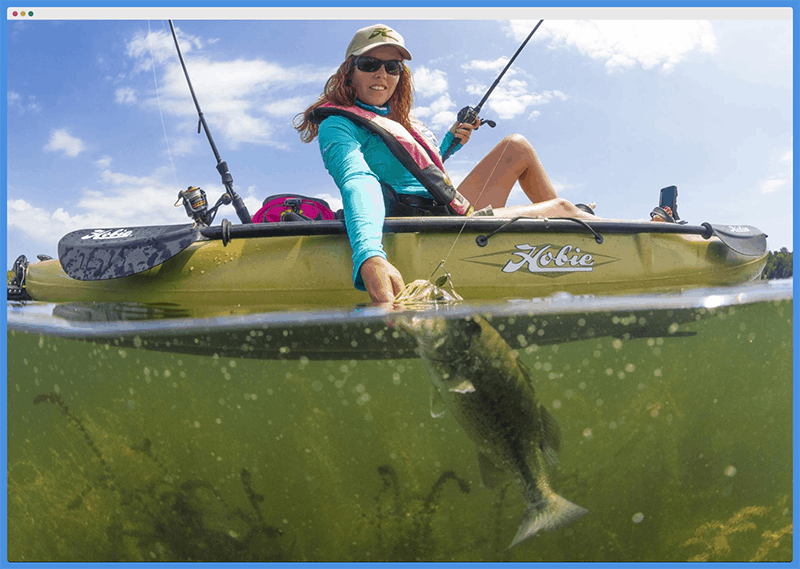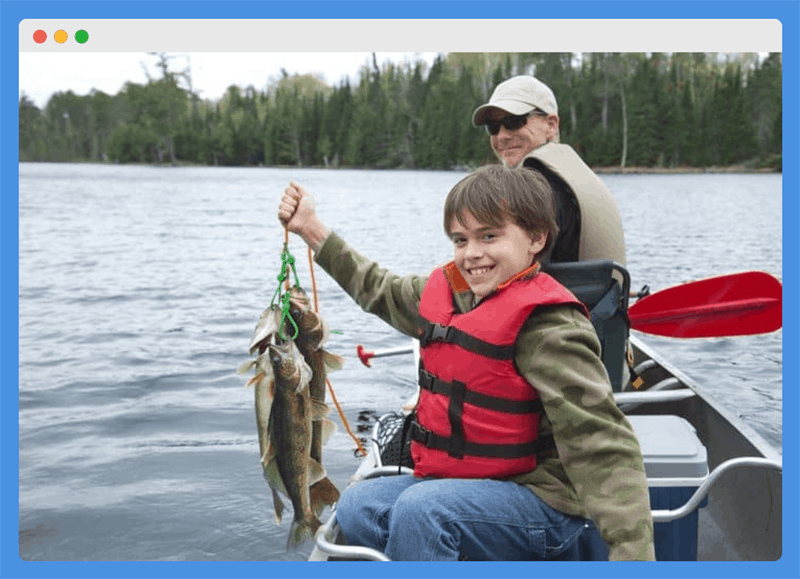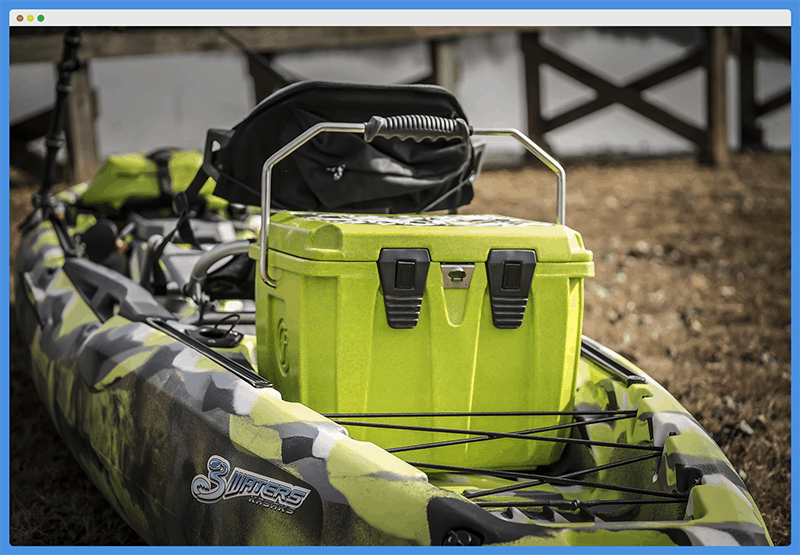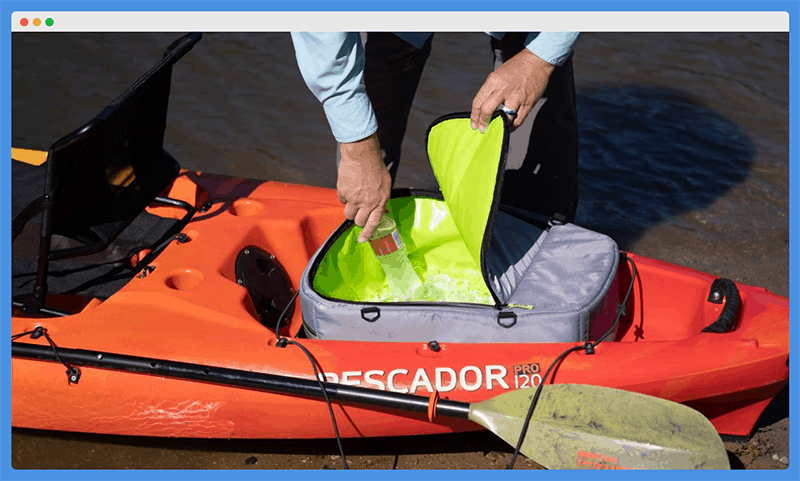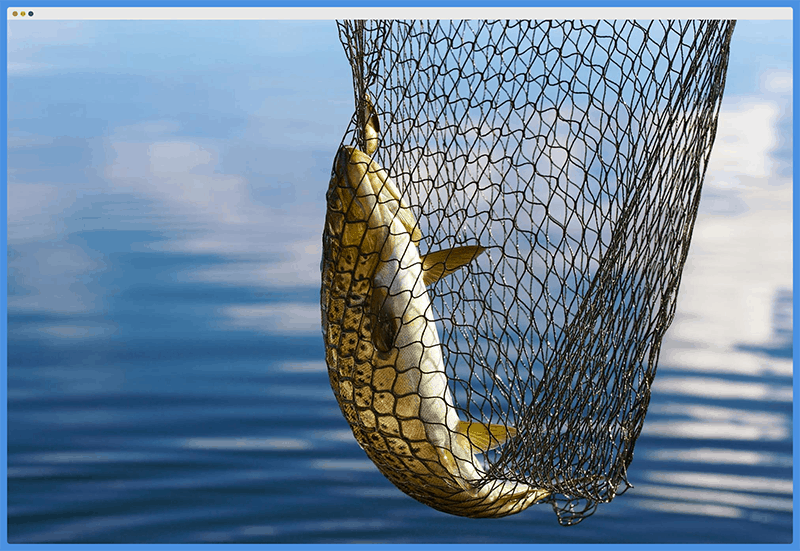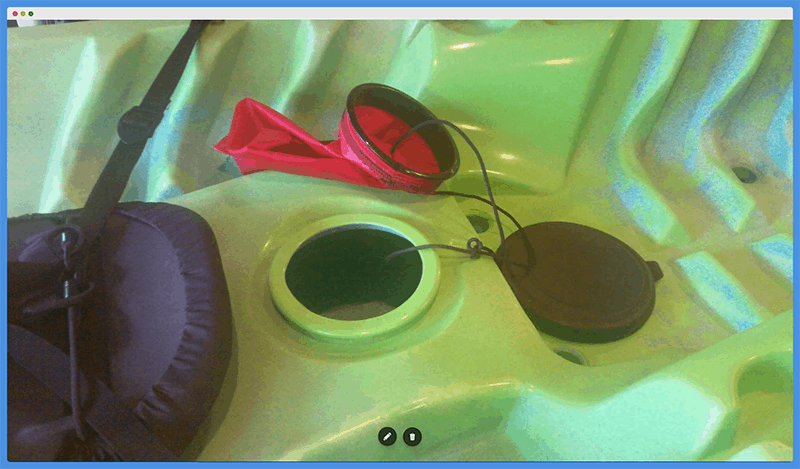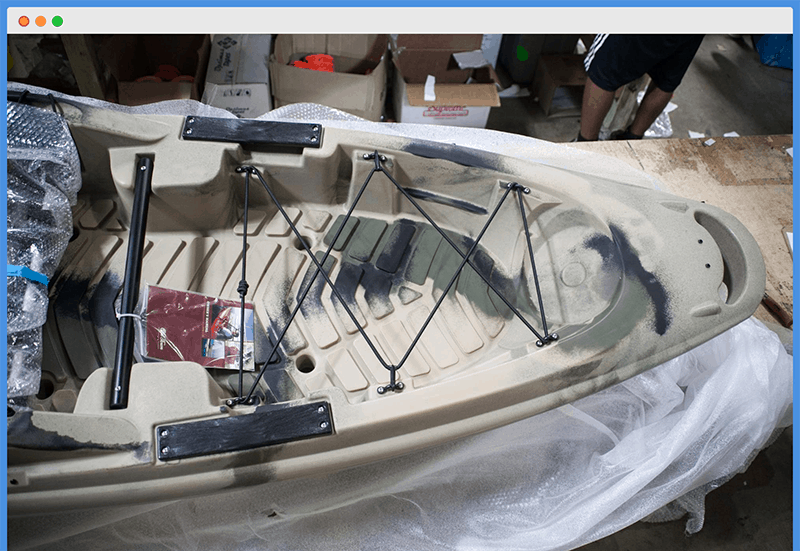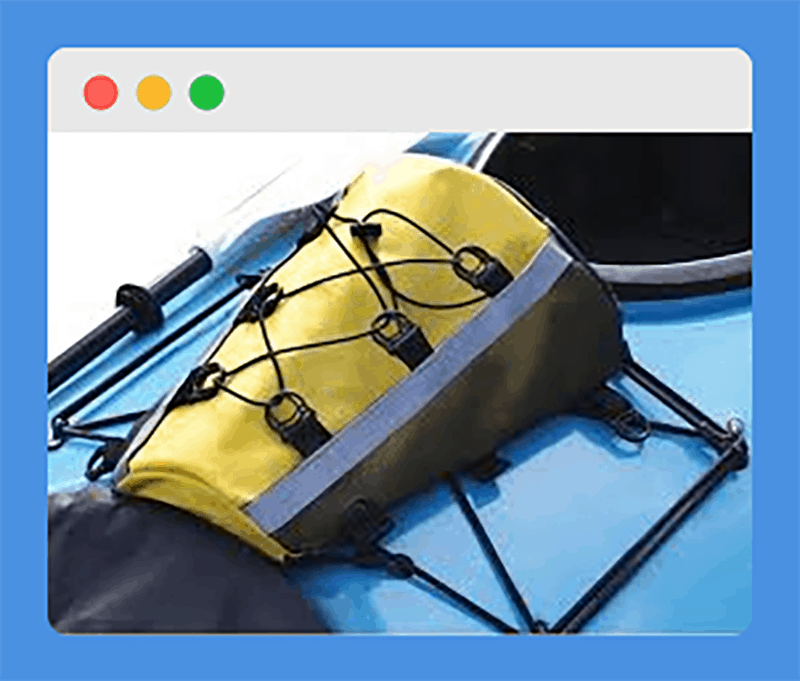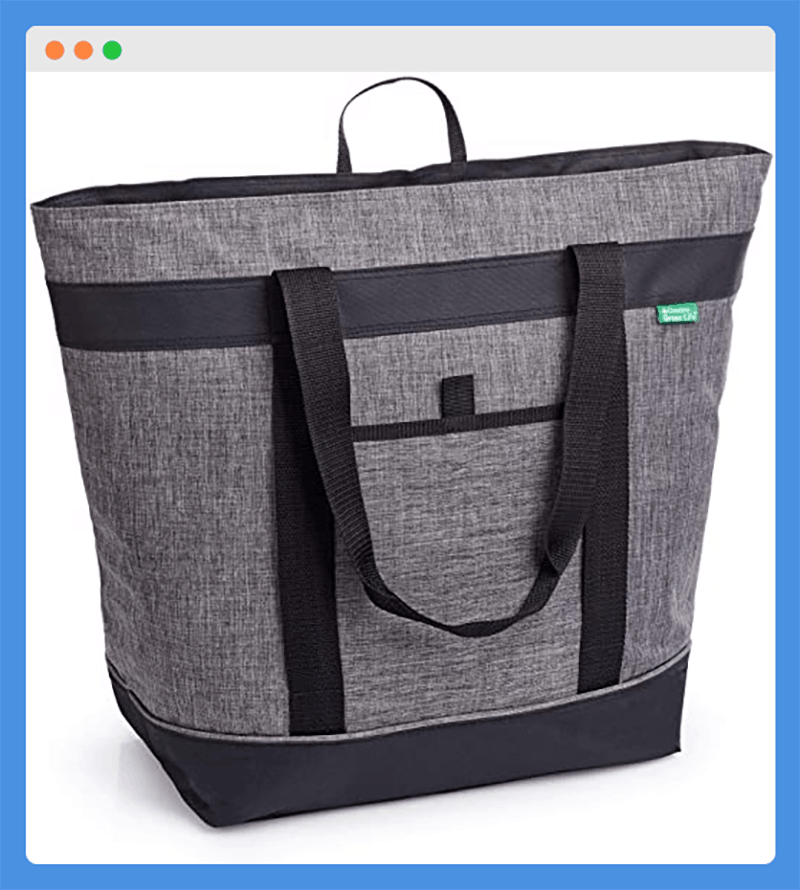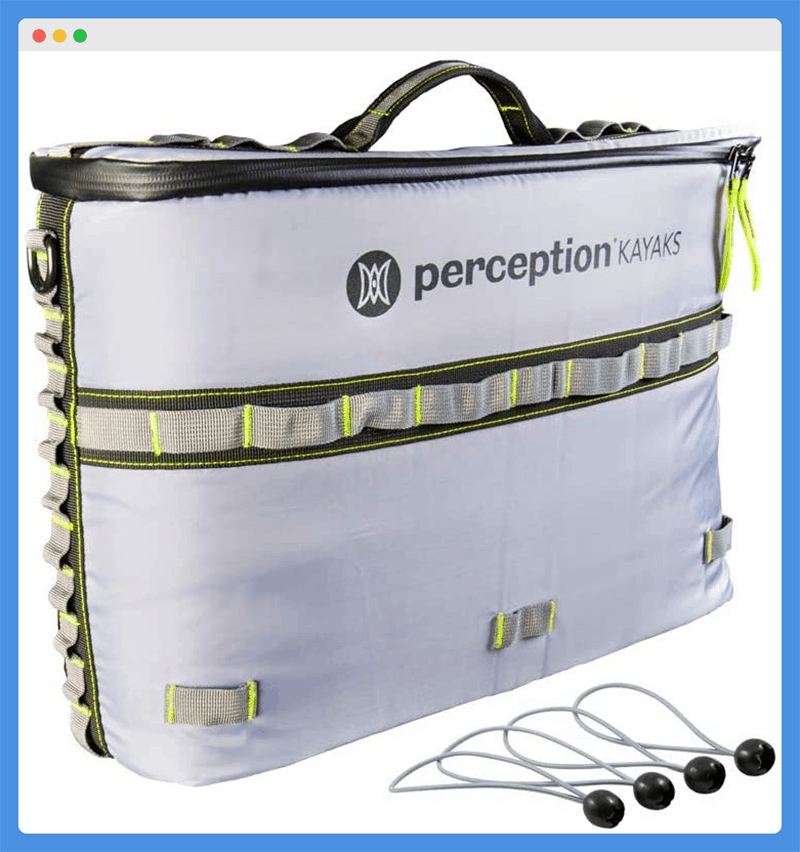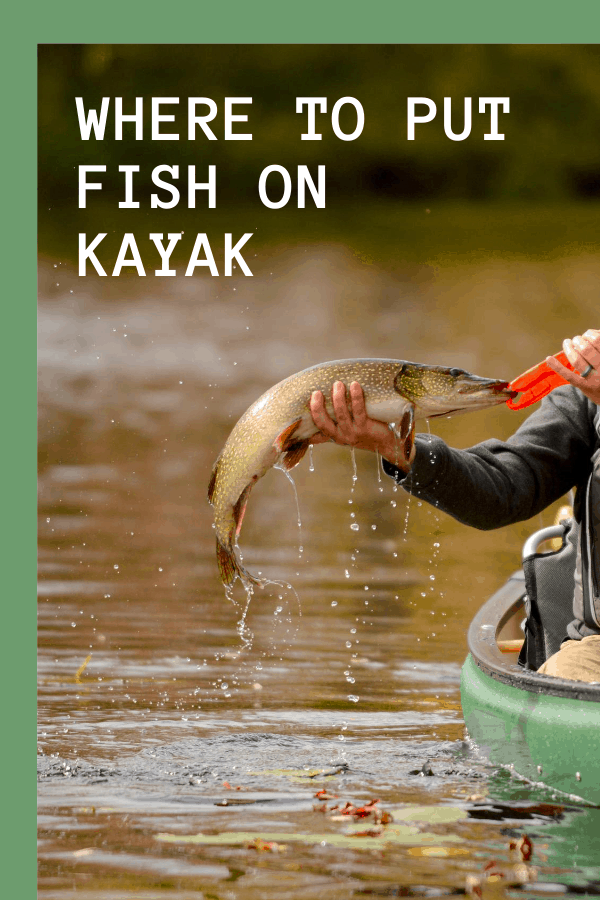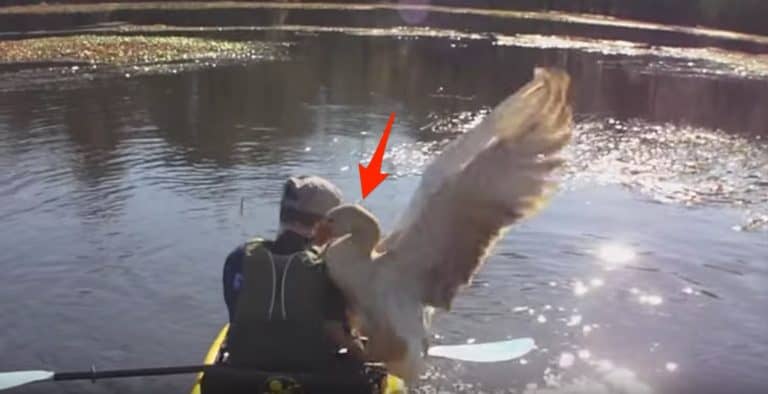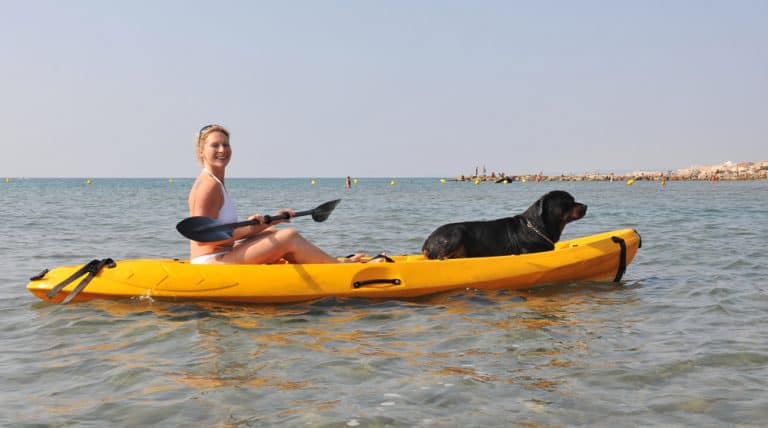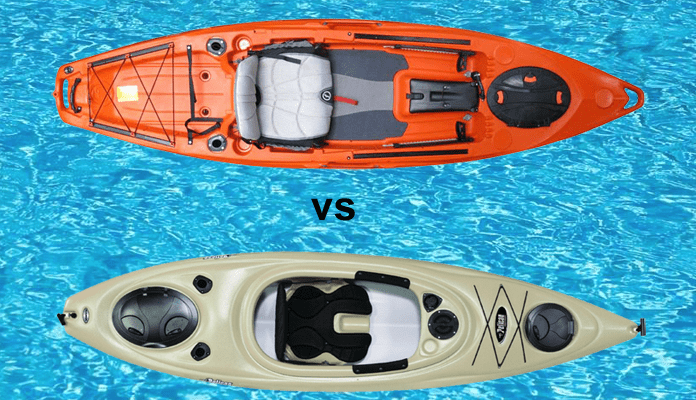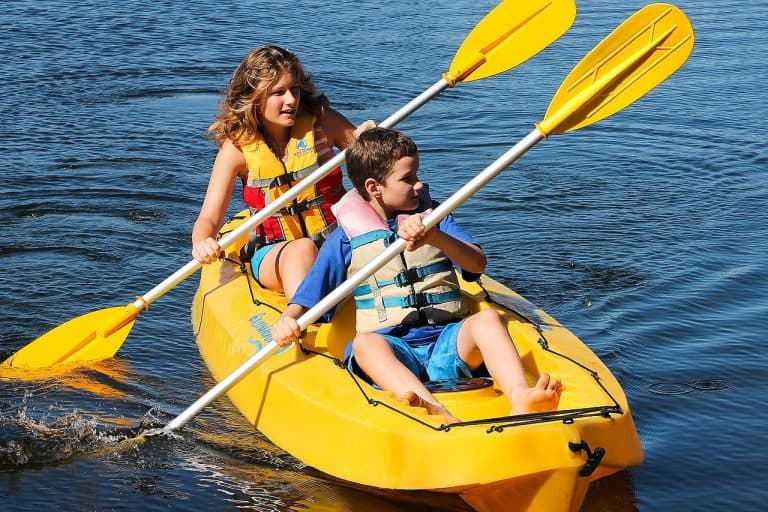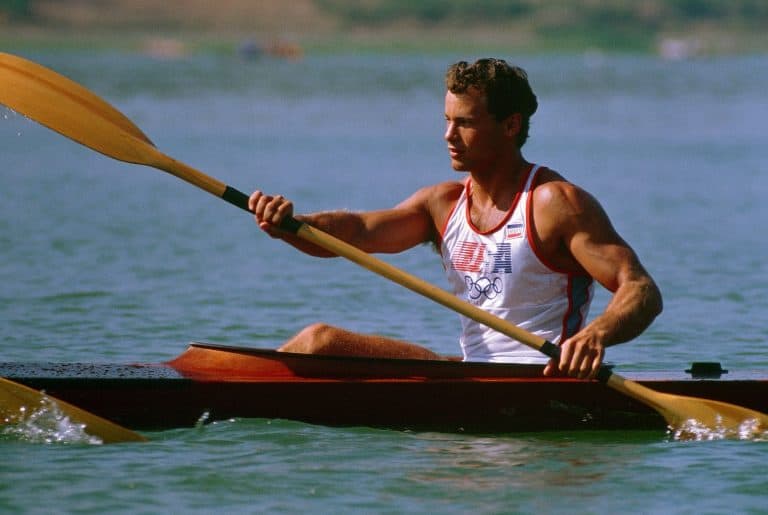There’s a ton of advice out there for how to set up your kayak for fishing and you probably won’t have a tough time finding recommendations for how to catch more fish when kayak angling.
But that still leaves out the troublesome question of where to put fish on your kayak once you catch them.
Kayaks offer a lot less space than your average fishing boat, so keeping your catches safe and secure while you continue fishing takes a little more preparation.
Thankfully, you’re not the first person who has encountered this dilemma (and you certainly won’t be the last!).
Many folks have come before you and done the hard part of testing various fish storage solutions to find what works best for different situations.
Today, we’re going to answer the question of where to put fish on a kayak once you bring them on board. And we’ll also offer some general kayak fishing tips and define key kayak fishing terminology that you should be familiar with before you set out on the water.
Let’s get started!
Kayak Fishing Jargon Buster
If you haven’t heard some of these kayak fishing terms before, some of them may sound like a foreign language. So let’s provide some brief definitions so that you aren’t caught off guard when you hear these terms out on the water.
Tankwell
A tankwell is a storage compartment on most fishing kayaks. They are typically open areas toward the bow or stern of the kayak that provides space to store coolers, tackle boxes, deck bags, and other kayak fishing accessories.
Tracking
This term is used to describe a kayak’s ability to remain in a straight line as you paddle. Many things can impact a kayak’s tracking ability, including wind, currents, drag, and the kayak’s hull design.
Sleigh Ride
This is the colloquial term that is used to describe the ride that a kayak angler enjoys when he or she hooks onto a fish and the fish begins to pull their kayak around.
Fish On!
This is a familiar shout that you might hear from your fishing buddies when they hook into a fish. In other words, “a fish is on the line!”
Kayak Fishing Tips
Before we get into the different ways that you can store fish on your kayak and keep them fresh, we’ll provide some general kayak fishing tips to help you be prepared and more effective when you’re on the water.
Prep Multiple Setups Before You Get On The Water
One of the most important features of any good fishing kayak is multiple rod holders. This allows you to have multiple combos setup to fish at different depths or with different bait and tackle.
If you’re new to kayak angling, you should always prep multiple rods before you get on the water. Then you can keep these setups on hand until you need them and eliminate the amount of time you spend re-stringing or changing bait while you’re on the water.
Make Use Of Your Feet
This may sound counterintuitive, but many of the best kayak anglers find creative ways to use their feet while their hands are busy paddling, casting, reeling, or performing any other task necessary for bringing fish onboard.
Your feet can be used as rudders or even paddles if you want to adjust the direction or location of your kayak while you’re fishing. Of course, this will only work if your kayak is narrow enough to stick your feet over the edge and into the water while you’re seated in the cockpit.
That being said, your feet can also act as a great impromptu anchor if you want to stay fishing in one place. Simply reach out and hook your foot onto a nearby log or rock to keep your kayak in place while you direct a few more casts into a particularly busy fishing hole
Master One-Handed Casting
Because kayak fishing often requires that you have one hand constantly on your paddle, it’s good to master one-handed casting to make your time on the water as efficient and effective as possible.
Even if you do have both hands free because you’re paddling a pedal-driven kayak like the Perception Pescador Pilot 12, the limited amount of space on a kayak makes it difficult to execute a solid two-handed cast.
Whether you’re baitcasting or spinning tackle, mastering the one-handed cast is a must for kayak fishing. This is one important reason why many kayak anglers opt for lighter combos and utilize more finesse casting tactics.
Utilize Eddies
As a beginner, you might struggle if fishing on rivers with substantial currents. They can make it harder to navigate and fish at the same time, but if you’re able to use currents to your advantage, they can become a real asset.
Experienced anglers using some of the best river fishing kayaks know how to utilize eddy currents to their advantage.
Intentionally getting your kayak into an eddy can give you time to fish hard-to-reach spots that you might otherwise go floating right past.
Fish The Shoreline
On many lakes and rivers, the shoreline often provides the best hiding spots for fish. But paddling along the shoreline can also provide much easier going as you attempt to navigate your kayak.
If you encounter heavy winds or strong currents, the shoreline is always going to be the most protected place for kayak fishing.
It’s always going to be much easier to paddle along the shoreline in shallower water than to paddle right down the middle of a lake or river.
Get An Anchor (And Use It!)
Fighting currents or heavy winds will make you tired and cause you to spend less time actually fishing while you’re on the water.
So if you live in a place that regularly experiences wind and/or currents, we suggest getting one of the best kayak anchors and using it early and often!
Where To Put Fish On Kayak?
The good news is that you’ll have plenty of options for where to put fish on your kayak. Let’s dive into some of those options and investigate the pros and cons of each so that you can ultimately choose the best option for your kayak angling needs.
1. Stringers
Using stringers to keep fish fresh is one of the oldest techniques for anglers, whether you’re fishing from a kayak, canoe, or motorized vessel. They’re easy to use and have the benefit of being lightweight.
Stringers also take up much less space in your kayak than a cooler and you rely on the temperature of the water to keep your fish fresh. To use them, you simply “string” through the fish’s gills and then hook back to the string to keep the fish secure.
One downside of stringers, however, is that they can make it hard to maneuver your kayak because of the increased drag. Depending on your setup, a stringer could also end up in the way of your paddle strokes.
So many anglers shy away from stringers because they make your kayak slower and less able to track straight. Additionally, stringers should always be avoided if you’re fishing in saltwater.
As you might imagine, having dead fish hanging off your kayak isn’t the best idea if there are larger predators lurking in the waters below. Hanging fish off a stringer while fishing in saltwater is a prime recipe for attracting sharks.
In addition, stringers aren’t as good at keeping your fish fresh if you’re going to be out for a few more hours after catching them.
This is especially true if you live in hot regions where surface water temperatures regularly exceed 80 degrees Fahrenheit.
Fish in these warmer regions intentionally seek deeper waters for their cooler temperatures. So, combined with the lack of oxygen supply, having your fish floating on a stringer in very warm water is a recipe to have them start decaying before you can get home.
Stringers also increase the odds of losing your catch if they happen to get snagged on a branch or submerged obstruction.
And even if you don’t lose them, your fish can be bruised or damaged by hanging on a stringer in shallow waters.
This means that stringers should mostly be used when fishing in colder, deeper freshwater locations.
But they can also be useful if you know that the fishes you catch aren’t going to be on the stringer for more than an hour or so until you can properly refrigerate them.
2. Hard Coolers
Hard coolers are a great alternative to stringers because you can keep ice or ice packs in them for refrigerating your catches while you make your way home. Hard coolers are very durable and also keep your fish protected from predators.
Most of the best fishing kayaks are designed with plenty of space in the rear tankwell for a kayak cooler to fit easily. Hard coolers usually use some sort of latches to remain sealed and generally provide more insulation than soft coolers.
The length and width of a hard cooler are important to know before you buy one for your kayak. You need to find something that’s definitely going to fit in the rear tank well of your boat.
But you should also seek a design that’s not overly tall so that it’s not in the way when you’re paddling or casting. Remember that most hard-sided coolers also have the advantage of being watertight if you do accidentally capsize.
When using a hard kayak cooler, it’s important to avoid putting loose ice inside that’s likely to melt over the course of the day.
Having your fish sit in lukewarm water inside a cooler is just as bad as dragging them underneath your kayak in 80-degree water.
A good strategy for keeping your fish cold in a hard cooler is to use frozen water bottles. This keeps the inside of the cooler dry but also keeps your fish cold enough to remain fresh until you get home.
3. Soft Coolers
For some kayaks, a soft-sided cooler can be better for keeping fish fresh until you can get home. Soft-side coolers have the advantage of being more adaptable to fit in a wider variety of kayak tank wells too.
This means that soft coolers can be used for both sit inside and sit on top kayaks. They are more versatile than hard-sided coolers and can be strapped onto your kayak in your preferred location, rather than having to be secured in the rear tank well of your fishing kayak.
Most soft-sided kayak coolers are secured with a zipper and many of them boast similar capacities as their hard-sided counterparts.
They’re also much lighter than hard coolers, which makes them great for anglers that like to cover a lot of distance and don’t want to add unnecessary weight to their kayak setup.
But when it comes to cons, most soft coolers aren’t as water-resistant as hard-sided coolers. This means that water is more likely to permeate into a soft cooler if you accidentally capsize when you catch that record-breaking tuna!
When compared to hard coolers, soft-sided coolers also tend to provide less total insulation. This means that they’re better for cooler environments or shorter fishing trips where you don’t need to keep your fish fresh quite as long.
To see the best options for both hard and soft kayak cooler designs, check out our article on the best kayak coolers for 2020!
4. Nets
While we don’t necessarily recommend doing so, you can also use one of the best kayak fishing nets to keep fish secure on a kayak. If you choose to do so, you’ll need to be 100% sure that all of your fish are dead before storing them in a net.
Using this method will typically require hanging the net off the back or side of your kayak so that the fish are in the water. This may be acceptable for kayak anglers fishing in colder waters but should be avoided in hotter climates.
This method is similar to the one used with stringers, and it will also impact the speed and maneuverability of your kayak.
Hanging fish off your kayak in a net will make you slower and make you work harder to keep your kayak tracking straight as you relocate to a new fishing hole.
Additionally, keeping your fish in a net may be even less secure than a stringer. There’s going to be a higher likelihood of your fish coming out of the net and you losing your hard-earned catches before you can even get them home.
This method also comes with the possibility of your net and fish being damaged if dragged across the bottom in shallow water. If you fish in saltwater, definitely avoid this method as you’re likely to attract sharks or other ocean predators.
As you can see, this is indeed an option for where to put fish on a kayak. But it’s not one that we’d recommend unless you don’t have any other method at your disposal.
5. Kayak Hatches
Many kayak anglers overlook the usefulness of the built-in storage hatches in their kayak.
While some might not have the biggest hatches, they can still be a useful option for storing and keeping fish fresh while you finish fishing the last of your favorite hot spots.
For our money, we’d always recommend using the hatch on your kayak that’s most easily accessible from the comfort of your kayak seat.
This makes it easy to unhook your catches and place them into the hatch without turning or fidgeting about in your kayak.
The only problem with using kayak storage hatches for fish storage is that they aren’t super well insulated. So the plastic inside your kayak is most likely going to be even warmer than the water temperature where your fishing.
This makes them a poor option for anglers in very warm climates. And we should also consider the fact that some kayak storage hatches aren’t as ”˜watertight’ as the manufacturer might claim.
This could lead to your fish sitting in a thin layer of water and cause them to begin decaying sooner.
If you do use the kayak hatch storage method, make sure to utilize the frozen plastic water bottle trick that you’d also employ with a hard or soft cooler.
This trick will buy you a little extra time to see if you can add another fish or two to your haul before you pull your lines in and head home.
6. Tankwells
The tank wells in your kayak are the most obvious place to store fish once you’ve hauled them on board.
They offer enough space for larger catches and you won’t have to worry about dragging fish beneath your kayak as you relocated.
However, tank wells alone aren’t a standalone option for storing fish on a kayak. You’ll need to use a quality cooler (hard or soft) that fits in the tank well of your kayak to keep your fish cool and fresh longer.
7. Deck Bags
If you don’t have enough room in the tankwell of your kayak because you already have a tackle box or other accessories back there, one of the best kayak deck bags can also be an option for storing fish.
However, if you do go this route, we recommend designating one deck bag that’s exclusively used for fish storage purposes.
This will help you avoid storing other kayaking gear in a bag that’s going to end up permanently smelling a little fishy.
These bags will provide a secure method for storing fish on your kayak, but they won’t provide nearly as much insulation as a soft or hard cooler. So you won’t be able to keep fish cool in them for long periods of time.
You’ll also need to use some sort of ice packs or frozen water bottles to keep fish cold inside a deck bag. One method involves putting fish into a plastic bag with a frozen water bottle before storing it in a deck bag.
While it’s not the most effective method for putting fish on a kayak (and keeping them fresh!), it can be effective for anglers in colder regions or those that don’t need to keep their catches cold for very long before they can get home.
8. Insulated Grocery Bags
Another affordable option for where to put fish on a kayak is insulated grocery bags. These have the benefit of providing the same type of insulation as many soft kayak coolers and they can provide a decent amount of space for your fish.
Just like with many of these options, you’ll want to use frozen plastic water bottles to keep the interior of your grocery bags cold. This makes your fish stay fresh longer and slows down the process of decay.
Unfortunately, insulated grocery bags aren’t waterproof. So if you’re fishing in any sort of inclement weather or you happen to capsize, they won’t keep your fish from getting wet and soggy, which can actually speed up the decaying process.
Our Pick – Perception Splash Seat Back Cooler
Our pick for the best accessory to solve your issue of where to put fish on a kayak is the Perception Splash Seat Back Cooler. This is a soft cooler that can hook directly onto an aluminum-framed kayak seat.
So while it won’t work on fishing kayaks with other types of seats, it’s a good thing that most of the best ocean fishing kayaks have this type of seat already installed.
It comes with four bungee ball anchors so that you can attach it as high or low on your seat back as you desire.
This kayak cooler boasts ¾” closed-cell foam for insulation and YKK water-resistant zippers to keep moisture out.
It’s also made of water-resistant materials and is made with RF-welded internal seams for added protection against water ingress.
Multiple webbing loops and D-ring attachment points make it super easy to secure this cooler to your kayak. The top zipper makes it easy to access the internal compartment while seated in the cockpit of your kayak.
We also chose this kayak cooler as our pick for the best option for storing fish because it’s compatible with other Perception Splash accessories.
This includes their Splash Rod Holders and Splash Mesh Organizers that allow you to add to your ultimate kayak fishing setup!


